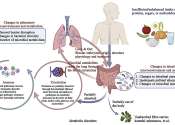UN approves an updated cholera vaccine that could help fight a surge in cases
The World Health Organization has approved a version of a widely used cholera vaccine that could help address a surge in cases that has depleted the global vaccine stockpile and left poorer countries scrambling to contain ...
16 hours ago
0
0









